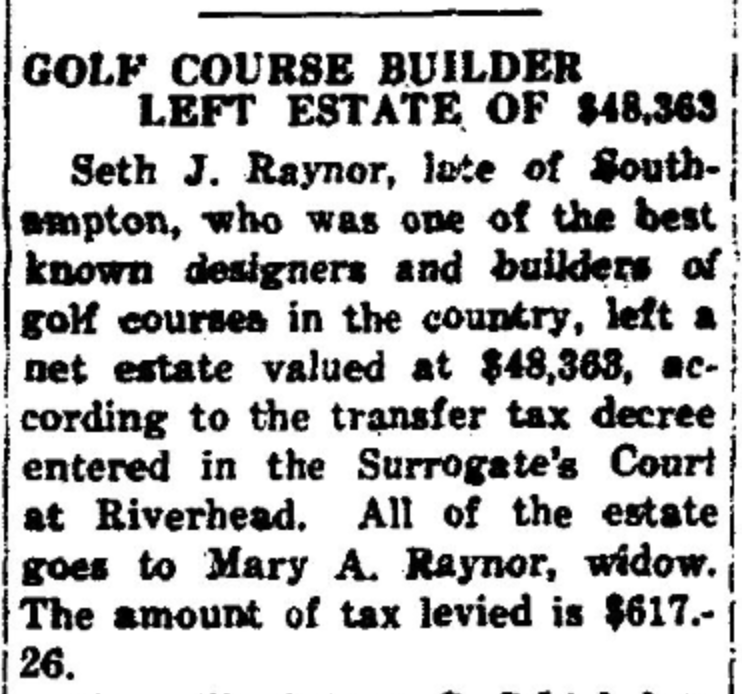Like many of his peers, Raynor never accumulated a net worth that we would consider staggering. When he passed away in 1926, at the prime of his career and after a number of years of non-stop work, his estate was only worth $48,363 (around $700,000 in today's dollars).
Despite living in a world of financiers, railroad builders and the eternally wealthy, Raynor belonged to a more modest set. His Southampton roots date back to a time before the neighborhood had become a fashionable getaway spot for New York's elite (and perhaps CBM and the crowd he brought out that way are partially responsible for turning the Hamptons into what they are).
It is hard to say if he his career was more lucrative as a golf architect than it would have been if he had stayed a surveyor. There certainly would have been work for him on Long Island, as post-WWI was a period of massive real estate expansion out of the city.
It is also hard to say if what the impact on the golf world would have been if he had opted for a different route. It seems unlikely that his portfolio of courses would have been built by CBM on his own, and we probably never would have met Charles Banks and Ralph Barton in this arena.
Jan. 5, 1928 The County Review -
